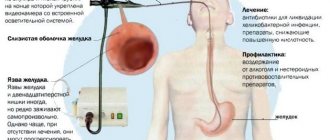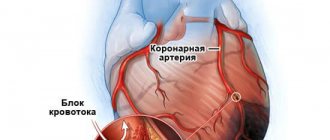Home How to stay healthy longer?
Author: Alexey Shevchenko June 11, 2020 12:00 Category: How to stay healthy longer?
Good day, dear readers of Alexey Shevchenko’s blog “Healthy Lifestyle”. Rotavirus infection can cause a lot of trouble. And although it most often occurs in a mild form, no one wants to suffer for almost a whole week from abdominal pain and severe diarrhea. A cure for rotavirus has not yet been invented, but there is a vaccine for rotavirus infection.
- 1 Insidious rotavirus
- 2 Disease statistics
- 3 Features of vaccines
- 4 How is vaccination carried out?
What is the danger of rotavirus infection?
Rotavirus infections are widespread in all countries and on all continents. According to WHO (World Health Organization), more than 25 million people suffer from this disease every year. Of these, more than 2/3 of cases occur in children under 5 years of age. In the general statistics of gastrointestinal diseases associated with diarrhea, rotavirus infections account for approximately 40%.
Rotavirus infection is not a severe or “quarantine” disease. However, up to 600-900 thousand deaths are recorded annually in the world. Of these, almost 500 thousand are children of a younger age group, and the remaining number are elderly people and patients with weakened immune systems.
Rotavirus is resistant to environmental factors. It tolerates low temperatures, high humidity, and exposure to disinfectants. It is highly contagious and can be transmitted by airborne droplets from a sick person to a healthy person. The most common method of transmission of the virus is through household contact. Children most often become infected through toys or objects that a sick child or adult has had contact with.
Rotavirus infections are characterized by seasonality. A surge in incidence is recorded during the cold season (from November to April). It reaches its maximum values in the spring, when the body is weakened by the winter lack of sufficient vitamins and UV rays emanating from the Sun. Often, outbreaks of rotavirus infections coincide in time with seasonal epidemics of respiratory viral infections. Hence another name for the described pathology – intestinal flu. Cases of infection may be isolated, but in preschool institutions they often become local epidemics, leading to the introduction of quarantine measures.
How often do they get sick?
If you have not been vaccinated against rotavirus infections, stable immunity to the effects of the virus is gradually developed in the human body. Usually, by the age of 5, a child has had time to get rotavirus infection 2-3 times. Only after this a sufficient number of antibodies to the virus are formed that can protect the body from repeated infections.
In Russia, in recent decades, there have been no outbreaks of rotavirus infection in children that would cause serious concern on a national scale. The same cannot be said about third world countries. The most global epidemics of this disease were observed in Brazil in 1977 and in Nicaragua in 2005. They were caused by a mutated type A virus, which mainly affects children.
Virus B causes disease mostly in adults. It caused epidemics of diarrhea and gastroenteritis in India in 1998 and in China in the 2000s. In China, there is a permanent focus of endemic rotavirus strain CAL. It is maintained due to severe pollution of rivers and reservoirs with wastewater and poor sanitary standards of the rural population.
How it spreads
The main way the virus spreads is fecal-oral. In this case, direct contact with the secretions of the sick person is not necessary. The virus is released from the body in huge quantities - more than 10 trillion per 1 gram of feces.
Due to its high stability in the external environment, traditional methods of sanitization do not have a significant impact on the development of epidemics.
Children become infected at an early age orally, through household items or food due to the fact that they do not understand the need to take precautions. Exploring the world, babies up to one year old taste many things. A pattern was noted in the sexual preference of rotavirus type “A”. Boys become infected and fall ill approximately 2 times more often than girls. A similar pattern has not been identified for the “B” strain virus, which causes diseases in adults.
Traditional methods of preventing epidemics of intestinal infections, associated with sanitary treatment of premises and strict adherence to hygiene measures, are ineffective against rotavirus. Evidence of this is the equal number of cases in countries with a high standard of living and medical development and in third world countries with low sanitary standards.
Insidious rotavirus
Rotavirus infection is the leading cause of severe, painful diarrhea among young children. The virus is very sticky. It spares breastfed babies (only because they are protected by live mother's milk), but once the baby is weaned, the immune protection disappears. Typically, children become infected with this unpleasant disease literally a few days after their first visit to a nursery or kindergarten. (This infection is also discussed here and here).
In developed countries, there are relatively few deadly cases, but in poor southern countries the virus is rampant in earnest. Every year, more than 600,000 children die from it in the world alone. In general, around the world, rotavirus accounts for about 5% of deaths among children under 5 years of age.
The virus destroys the epithelial cells of the intestinal villi, and until the immune system neutralizes it, normal digestion of food becomes impossible. Because of this, severe diarrhea, repeated vomiting, nausea and abdominal pain develop. In rare cases, the disease process involves the kidneys, liver, and even the central nervous system.
https://youtu.be/VWJMtz0imyc
Existing rotavirus vaccines
Until recently, children were vaccinated against rotavirus solely at the request of their parents. Much attention has not been paid to vaccine development. Therefore, at present there is only one polyvalent vaccine against rotavirus, officially registered in the Russian Federation, protecting simultaneously against 5 serotypes - RotaTek. It is available in the form of drops. The solution contains live, but weakened, viruses of various strains that cause a response from the immune system, but are not capable of causing disease. The vaccine is dropped into the child's mouth.
In addition to the Russian development, vaccination with the imported vaccine against rotavirus infection “Rotarix” is possible. It contains only one weakened strain of the virus, but produces more durable immunity. It is not contraindicated to vaccinate a child simultaneously or sequentially with both types of vaccines. This promotes stronger immunity.
Diversity of the virus
To be honest, opinions here are divided. And it’s difficult to say exactly what kind of reviews the rotavirus vaccine is getting. Each parent must come to one conclusion or another for himself.
The first reason why some people refuse vaccination is nothing other than the diversity of rotavirus infection. You can compare it to the flu. That is, vaccination often cannot protect the baby from all varieties of our current disease. It follows that the risk of infection still exists. This means there is no point in vaccination. This is exactly what some parents say. Often, after vaccination, children still become infected with rotavirus. Not the best outcome, especially after vaccination. This all suggests that the rotavirus vaccine is not very effective. In any case, after it there is still a chance of infection due to the variety of infections.
Principles and purposes of vaccination
Rotavirus vaccinations are included in the mandatory vaccination plan for children aged 6 to 32 weeks. Such early immunization is explained by the fact that it is during the period of adaptation of the newborn to environmental conditions that the greatest number of diseases occur. Typically, a child becomes infected with rotavirus for the first time before the age of 2 years.
A vaccinated child has a reduced risk of disease. After vaccination, immunity lasts for 2-3 years. Therefore, the patient manages to reach an age when viruses that have entered the body contribute to the development of natural immunity without causing an acute illness.
Contraindications
Contraindications can be absolute and relative. The first include:
- an allergic reaction to any component (chemical) contained in the rotavirus vaccine;
- congenital autoimmune disease, intrauterine or birth infection with HIV (AIDS);
- illness or complication after the first dose of the vaccine.
Relative contraindications are:
- infectious disease of the baby during the vaccination period;
- weakened condition caused by nutritional deficiency or congenital pathologies;
- postoperative period.
https://youtu.be/Re1pjRctu2U
Prevention of infection
To prevent infection with the virus, you should follow the following rules:
- Wash your hands regularly after visiting the toilet, going outside, and before each meal.
- Ventilate the child’s room well – the virus will be quickly eliminated.
- Carry out vaccination according to the schedule at the appropriate age.
- Limit contact with people who are sick with any infectious diseases.
- Carry out hardening procedures and rational physical activity.
- Eat properly and balanced.
- Avoid traveling to unfavorable regions, read reviews from tourists, and vaccinate according to epidemic indications.
How is vaccination carried out?
The course of immunization with the polyvalent RotaTek vaccine is carried out three times. At a certain interval, a dosed amount of weakened viruses of various strains enters the child’s body, to which a stable, but not one hundred percent, immunity is gradually developed.
If the baby is healthy and there are no absolute contraindications, then vaccination is carried out according to the recommended schedule:
- 1st time – every 2 months;
- 2nd time – at 3 months;
- 3rd time - at 4.5 months.
You can postpone vaccination to a later date if there are medical contraindications, but no later than until the age of two.
Rotavirus is widespread in nature, and a child will inevitably encounter it during the first five years of his life. Infection can lead to the development of a disease (diarrhea, gastroenteritis, fever, vomiting, weakness, moodiness), but can be asymptomatic or with vague symptoms. Regardless of whether parents paid attention to the symptoms caused by rotavirus or not, the production of antibodies to it still occurs.
Vaccination against rotavirus for children: up to what age is it done?
By the age of five, the vast majority of children have developed immunity to the disease. Therefore, vaccination against rotavirus in patients older than this age is not recommended. The required amount of antibodies is already contained in their body. Additional provocation by introducing a foreign protein that makes up the viral envelope is a factor stimulating the development of an allergic reaction. Vaccination against the causative agent of rotavirus infection is not given to children over 5 years of age and adults.
Preparing the child for the procedure
Specific preparation for vaccination against rotavirus is not required. You just need to follow the general rules for vaccination:
- at the time of vaccination, the child should not have respiratory or infectious diseases;
- within two to three days before and after vaccination, it is necessary to pay increased attention to compliance with hygiene standards;
- Before vaccination, you must undergo general urine and blood tests and be examined by a pediatrician to be allowed to undergo the procedure.
READ ALSO: vaccination calendar for children under 18 years of age
Vaccination against rotavirus infection is not given if the child has a high fever, runny nose, or cough. It is not recommended to vaccinate in case of diarrhea, vomiting or any disease in the acute stage.
READ ALSO: What vaccinations does a child get at three months?
Vaccine effectiveness
Rotavirus, like most other pathogenic infections, is subject to variability. There is a theory about the cross-exchange of viruses that cause disease in humans. Their counterparty is genome fragments with viruses that provoke disruption of the gastrointestinal tract in animals (mainly cattle and pigs). The production of antibodies to individual serotypes of the infectious agent contained in the rotavirus polyvalent vaccine "RotaTek" occurs. But this does not guarantee that the disease will not develop if a mutated virus enters the human body.
Vaccination reduces the likelihood of disease during the most critical period of life. After one year of age, children experience a gradual weakening of innate immunity and antibodies supplied through mother's breast milk, and the simultaneous production of their own antibodies to pathogenic agents begins.
No one can give a guarantee that a child who has completed the full course of vaccination will not get sick. But a vaccinated child at 3 years old has a much lower chance of getting sick than those who have not completed the course of vaccinations.
What are preventive vaccinations against intestinal infections called?
To prevent the development of rotavirus infection, vaccinations are given. Various drugs are used for vaccination. Doctors usually use Rotarix, RotaTek and Rotagal.
Monovalent Rotarix
Rotarix is a monovalent vaccine produced in Belgium.
Developed based on the human strain of rotavirus. Can be combined with other types of vaccinations (except BCG). The drug is safe and approved for use for the prevention of children from 1.5 months.
A pronounced immune response is formed 60 days after administration of the drug.
Revaccination is done at 2-month intervals and allows you to form lasting immunity.
Pentavalent RotaTech
Rotatek is a pentavalent vaccine produced in the USA. Created on the basis of human and bovine strains of rotavirus. The drug contains 5 serotypes of the pathogen. This allows you to reliably protect the body from infection. Rotatek is combined with all vaccinations, except whole-cell vaccinations against whooping cough, BCG and oral ones against polio. The vaccine is administered three times in 2 times; 4 months and six months. Rotatek is not registered in Russia, so it is expensive.
Inactivated Rotagal
To prevent infection with rotavirus infection, not only people, but also animals are vaccinated.
Rotagal is an inactivated oil vaccine produced in Spain, which is used to immunize cattle.
The drug contains a strain of animal rotavirus, Escherichia coli EC/17 and serotype G6P1.
The effectiveness of the product is 90%. The vaccination is combined with other vaccines. It is administered twice with a three-week interval.
Post-vaccination reactions
Any live vaccine inevitably causes an immune response from the body. It manifests itself differently in everyone, but in general, after taking the vaccine, the following symptoms are observed:
- moodiness, tearfulness;
- minor and short-term stool disorder;
- nausea or slight vomiting;
- increased body temperature;
- allergic skin rashes like urticaria.
Possible side effects and how to prevent them
In addition to the inevitable immune response to rotavirus vaccinations, complications may occur in rare cases. Usually they are not life-threatening, but require timely treatment:
- bronchospasm (allergic) – 0.01% of cases;
- intestinal obstruction or intestinal spasms – 0.001%;
- rhinitis or pharyngitis – 0.1%;
- inflammation of the middle ear – 0.01%.
Such symptoms are observed in children with a weakened immune system or against the background of bacterial or viral infections acquired during the production of antibodies to rotavirus. During the period between vaccinations, the baby should be protected from contact with sick adults and children.
Is it worth getting vaccinated?
Artificial immunization of the body has proven its effectiveness in millions of vaccinated children around the world. One should not refuse it for fear of developing adverse reactions, and the percentage of possible complications is on the border of statistical error. There is no direct evidence that it was the weakened rotaviruses included in the vaccine that caused their development. In the overwhelming majority of cases, the occurrence of negative symptoms simply coincides with the time of immunization, but they are caused by completely different pathogens that have entered the child’s body.
Contraindications and side effects
There are certain contraindications to vaccination. To minimize the likelihood of complications, you must first undergo a follow-up examination with a pediatrician.
Contraindications:
- high sensitivity of the child to one of the components of the vaccine;
- history of intestinal pathology (especially intussusception);
- some malformations of the gastrointestinal tract;
- immunodeficiency states (an individual vaccination schedule for the child is drawn up with the participation of an immunologist);
- the presence in the family of pregnant women, children and adults with immunodeficiencies;
- deficiency of certain gastrointestinal enzymes;
- diarrhea or vomiting in the baby at the time of vaccination.
Important! In the vast majority of cases, vaccination is easily tolerated by children, but the vaccine is a drug, so side effects can still occur.
Adverse reactions from the vaccine are divided by frequency of severity:
- Very often (about one in 10 vaccinated people) diarrhea, vomiting, and short-term fever are observed.
- Respiratory tract infections are often recorded (in no more than one child out of 100).
- Uncommon (no more than one child out of 1000 immunized) - inflammatory diseases of the ear and nasopharynx, abdominal pain, rash.
- Rarely (one in 10,000 or less) - allergic urticaria, bronchospasm, intussusception.
The rotavirus vaccine can be administered to a child simultaneously with any other immunotherapy drugs that are included in the national vaccination schedule (the exception is the BCG vaccine).
If parents buy the drug on their own, they must be informed about the rules for its transportation. Otherwise, the vaccine may lose its effectiveness.











